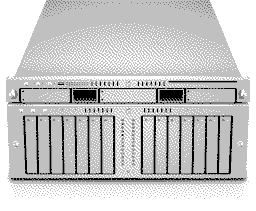17th Nov 2013 Killing the Xserve

On November 5th, 2010 Apple killed the Xserve.
At the time I thought killing the Xserve was a mistake. Like so many thousand Macintosh IT Professionals I thought Apple’s future in the Enterprise was tied to the existence of a shiny 1U rack-mountable Macintosh server. Without it how would the PC System Administrators ever take us seriously?
And what about all of the core Mac OS X technologies the Xserve was supposed to bring us? Features like a new filesystem to protect us against data corruption, and improved parallel computing to allow our applications to work smarter? Every new release of Windows reaps the rewards of features first developed for the Microsoft line of server operating systems. Without a similar strategy how was Apple supposed to keep up in key areas like endpoint management, and virtualization where Microsoft already holds a clear advantage? I feared without a flagship server, Apple would fall behind on the essential technologies needed to keep Mac OS X competitive. After all there is only so much you can steal from the open source community.
The problem is I never saw the Xserve for what it was. A Power Mac jammed inside a 1U aluminum case. The Xserve was never competitive. It was never the flagship I and the rest of Mac Nerdom wanted it to be.
No one ever heard the battlecries of the Xserve breaching the Enterprise Datacenter; unleashing a horde of Macs on every corporate desktop. It never happened. The Xserve was just a shiny piece of Apple kit that sat in the corner of Mac shops. A showpiece to impress clients. A server just easy enough to use, the tech guy could figure it out and no one needed to hire a dedicated system administrator.
Sure there are examples of Xserves being used in numbers. The Virginia System X supercomputer comes to mind. But even it started out its life composed of Power Mac G5s. And who says System X wasn’t as much a public relations stunt for Apple, as it was a serious attempt at supercomputing?
The Xserve wasn’t even competitive with the Power Macs of the day. When it was released in June 2002 you could get a faster PowerPC G4 processor in your Power Mac than you could in your Xserve. And during the Xserve G5’s entire lifetime it was never able to meet the clock speed or the number of cores as the top of the line Power Mac G5. Apple never took the Xserve seriously. That is why it came as no surprise that in November 2006 the Xserve was the last Mac to make the transition to Intel. The Xserve was slower, ran hotter, and cost more than other any other Mac during its short life. And outside of specially optimized tasks for Mac OS X, it was never able to compete with similarly priced PC servers. Do you honestly think Apple ran its enterprise on Xserves?
But what about all of those flagship features the Xserve was supposed to trickle down to consumer versions of Mac OS X? Unfortunately they never came to be. One reason is because Mac OS X doesn’t work that way. When a core feature is added to Mac OS X, it is available on both the client and server versions of the operating system simultaneously. Unlike Microsoft, Apple’s server OS has never been about leading the way towards technological innovations that would some day be available on the desktop. No, quite the opposite. Apple’s server OS has always been an extension of the client operating system that makes accessing features already installed in Mac OS X easier. Sorry Siracusa, but there was never any hope of the Xserve delivering a better filesystem.
Instead of supporting the Xserve, Apple decided to double-down on the products and technologies that would really matter, and leave the cut-throat market of server hardware to competitors who really had their skin in the game. Looking back it is easy to see that Apple made the right choice. By killing the Xserve we have better Macs, phones, tables, and Apple TVs today. Mac OS X is stronger without the Xserve. Because instead of getting trickle down technologies from its server OS, Mac OS X got better battery life, and millions of new users from its phone operating system. Take that Microsoft.
It is funny to think that because of the death of the Xserve, and not the Xserve itself, Apple now has more Macs in the enterprise than ever before. PC System Administrators eat your hearts out.